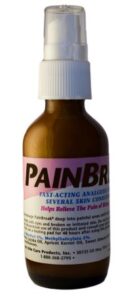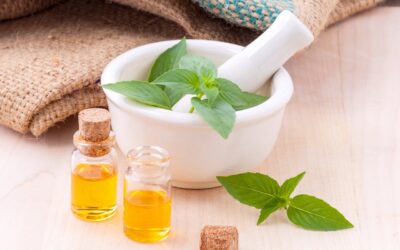When Touch Turns to Fire: A Terrain-Based Guide to Navigating Allodynia
For those living with postherpetic neuralgia (PHN), allodynia can feel like betrayal by the body itself. A breeze becomes a blade. A shirt becomes sandpaper. A hug becomes a jolt. This is pain from stimuli that shouldn’t hurt—and yet, they do.
Allodynia is not imagined. It’s a neurological misfire, where the brain interprets harmless sensations as threats. But even in this hypersensitive terrain, there are paths to relief. Whether you’re newly diagnosed or have been walking this road for years, these twelve strategies offer a way to reclaim comfort, dignity, and purpose.
Dress in Kindness
Choose clothing like you’d choose a friend—gentle, forgiving, and soft.
• Opt for loose-fitting, seamless garments made from cotton, bamboo, or modal.
• Remove tags, avoid underwires, and steer clear of synthetic fabrics that trap heat or friction.
• Consider adaptive clothing brands designed for neuropathic conditions.
Tip: Keep a “comfort wardrobe” for flare-up days—items that never provoke your skin.
Create a Comfort Cocoon
Your environment can either soothe or aggravate.
• Use plush blankets, soft pillowcases, and low-sheen lighting to reduce sensory overload.
• Avoid coarse upholstery, scratchy rugs, or textured bedding.
• Surround yourself with textures that whisper “peace,” not “pain.”
Tip: Keep a travel kit with soft items for unfamiliar environments—hotels, clinics, or cars.
Soothe with Topicals
Localized relief can be powerful when applied with care.
• Try diluted clove oil, menthol creams, or PainBreak for numbing effects.
• Always patch test first to avoid irritation.
• Apply with intention—like anointing, not attacking.
Tip: Use a soft cotton pad or your palm to apply, never rough cloths or vigorous rubbing.
Practice Gentle Desensitization
Retrain your nervous system to interpret touch more accurately.
• Use soft brushes, silk scarves, or feather-light fabrics to gently stimulate the skin.
• Begin with short sessions and increase gradually.
• This process is slow but can restore trust between your skin and your brain.
Tip: Pair desensitization with calming music or breathwork to reinforce safety.
Calm the Brain’s Alarm System
Allodynia is often a miscommunication—not just a skin issue, but a brain one.
• Use mindfulness, breathwork, and prayer to quiet the alarm bells.
• Try 4-7-8 breathing, guided meditations, or breath prayers like “Peace in, fire out.”
Tip: Practice daily, even when symptoms are low. Prevention is as powerful as intervention.
Mind the Temperature
Thermal allodynia means even mild heat or cold can trigger pain.
• Keep your environment temperate and consistent.
• Use lukewarm water for bathing and avoid extremes.
• Dress in layers to buffer sudden temperature shifts.
Tip: Keep a thermometer in your bathing area to avoid accidental heat spikes.
Limit Movement Triggers
Movement allodynia can make even gentle motion painful.
• Avoid repetitive strain and awkward postures.
• Use ergonomic supports, cushions, and mobility aids as needed.
• Gentle stretching may help—but never force movement through pain.
Tip: Try somatic movement or restorative yoga with a trained practitioner familiar with PHN.
Support the Terrain
Pain is often a symptom of deeper terrain imbalance.
• Address inflammation, nerve dysfunction, and nutrient depletion.
• Consider supplements like magnesium glycinate, omega-3s, and lion’s mane mushroom.
• Work with a terrain-trained practitioner to personalize your protocol.
Tip: Track your terrain scores monthly to monitor progress and adjust interventions.
Try TENS or Gentle Therapy
Some find relief with TENS units, craniosacral therapy, or gentle physical therapy.
• These modalities help modulate nerve signals and reduce hypersensitivity.
• Always start low and slow and consult a practitioner familiar with neuropathic pain.
Tip: Keep a log of what therapies help and what aggravate—your body’s feedback is sacred.
Honor Your Triggers
Awareness is power.
• Keep a journal of what worsens or soothes your symptoms.
• Track foods, fabrics, emotions, weather, and movement.
• Avoid known irritants and embrace what brings peace—be it music, prayer, or silence.
Tip: Use color-coded entries to spot patterns and flare-up predictors quickly.
Nourish from Within
Your diet directly influences nerve sensitivity.
• Focus on hydration, anti-inflammatory foods, and gut health.
• Avoid sugar spikes, processed foods, and alcohol.
• Think of each bite as either fuel or friction.
Tip: Try terrain-friendly meals like bone broth, leafy greens, wild salmon, and fermented veggies.
Transform Pain into Purpose
Allodynia may be part of your story, but it doesn’t own the narrative.
• Use your experience to educate, encourage, and empower others.
• Share your journey through writing, advocacy, or mentorship.
• Pain can become a platform for legacy, not limitation.
Tip: Create a “purpose journal” where you document how your healing journey impacts others.
Final Word: You Are Not Fragile, You Are Fierce
Allodynia may make the world feel hostile, but you are not alone. You are resilient, resourceful, and radiant. These steps won’t ease the pain overnight, but they offer a map to walk through fire without being consumed.
Ready to take control of your PHN journey?
Your Pain Has a Story. Let’s Decode It.
If you’re living with PHN, you deserve more than vague answers and guesswork. You deserve clarity. You deserve a plan. And it starts with one simple step.
Complete a confidential questionnaire designed to uncover the nuances of your condition.
This isn’t just a form—it’s a gateway to personalized insights, expert guidance, and the possibility of reclaiming your comfort and control.
Don’t wait for the pain to define your future. Define it yourself. Start now.
Complete the confidential questionnaire and get personalized insights that could change everything.
PainBreak® for PHN: A Testimony in Every Drop
When nerves ache…reach for PainBreak® Postherpetic Neuralgia (PHN) is the echo of a storm that refuses to fade. Long after the shingles have passed, pain lingers—burning, stabbing, aching. For many, it’s not just discomfort. It’s disorientation. A daily reminder that...
PHN Unmasked: Questions You Have… Answers You Need
The Truth About Postherpetic Neuralgia (PHN): 12 Questions That Demand Answers Postherpetic Neuralgia (PHN) isn’t just lingering pain—it’s a neurological condition that can disrupt your life long after shingles fades. If you or someone you love is navigating this...
Postherpetic Neuralgia A Metabolic Approach
Postherpetic Neuralgia? Re-wiring Your Genes for Healing Across 10 Terrain Domains Postherpetic neuralgia (PHN) is more than lingering pain; it’s a signal that the body’s healing systems need recalibration. While conventional treatments focus on symptom suppression, a...





